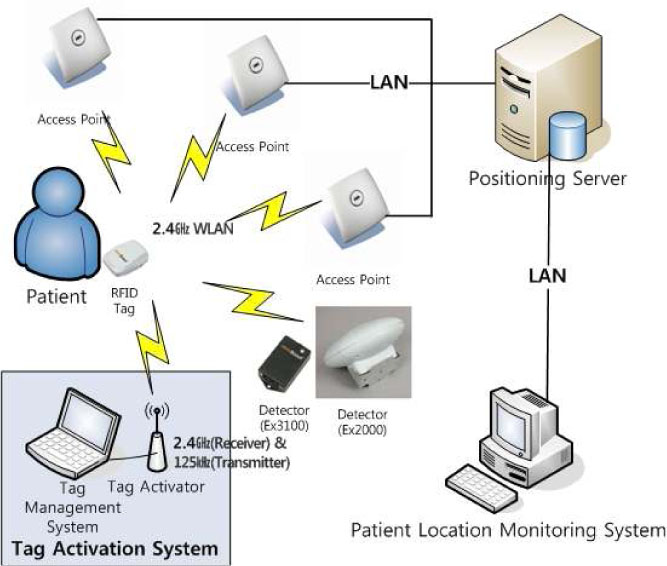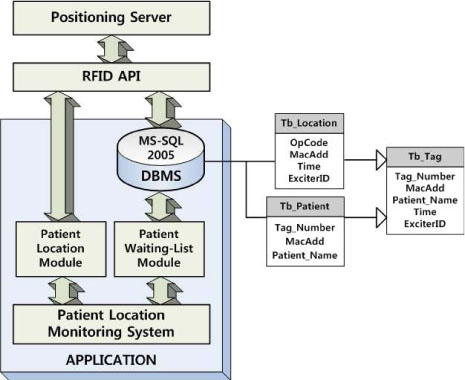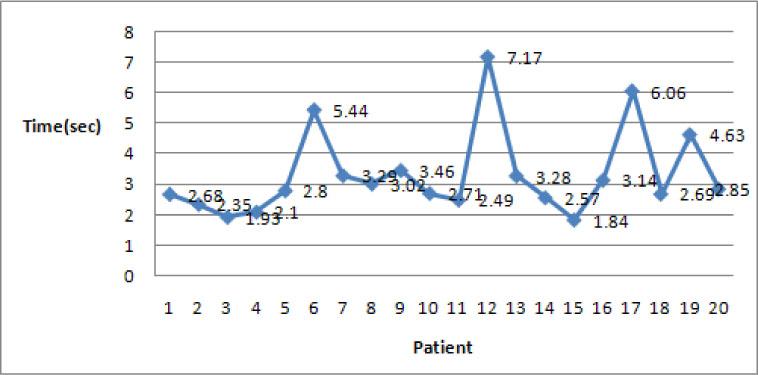J Korean Soc Med Inform.
2009 Mar;15(1):41-48.
A Study on the Patient Location Monitoring System Based on RFID - RSSI
- Affiliations
-
- 1Brain Korea21 Project for Medical Science, Yonsei University, Korea. sunkyoo@yuhs.ac
- 2Human Identification Research Center, Yonsei University, Korea.
- 3Graduate School of Biomedical Engineering, Yonsei University, Korea.
- 4Department of Emergency Medicine, Yonsei University College of Medicine, Korea.
- 5Department of Medical Engineering, Yonsei University College of Medicine, Korea.
- 6Center for Emergency Medical Informatics, Korea.
Abstract
OBJECTIVE
The location services has been an important research area in the U-Healthcare. The location services in medical environment can be implemented by Radio Frequency Identification (RFID), and Received Signal Strength Indication (RSSI) which is the location tracking method by RFID. In this study, we was designed the Patient Location Monitoring System based on RFID using RSSI method.
METHODS
The RSSI method is a distance measurement method from reference points to object using the Friis's Principle and the Triangulation. The Patient Location Monitoring System was implemented by XML Data transmitted from the Positioning Server to the application. The Patient Location Monitoring System was designed by C# of Visual Studio 2005 and MS-SQL 2005 Express.
RESULTS
The Patient Location Monitoring System had the location-tracking average error of 90.50cm, the standard-deviation of 13.34cm in Open-Space test. And, the designed system had the location-tracking average error of 163.24cm, the standard-deviation of 16.85cm in Closed-Space Test. Also, a patient waiting-list guide performance of the Patient Location Monitoring System had successes of 85~100%.
CONCLUSION
In this study, the Patient Location Monitoring System, combined with both patient location-tracking function and patient waiting-list guide function, was validated by experiments in medical environment and this system can be applicable to patient management and further applications.
Keyword
MeSH Terms
Figure
Reference
-
1. Maglogiannis I. EmerLoc:Location-based services for emergency medical incidents. International Journal of Medical Informatics. 2006.2. Chung-Chih L. Wireless Health Care Service System for Elderly With Dementia. IEEE Transactions on Informatics Technology in Biomedicine. 2006. 10. 10(4):3. Jongchul S. A Proximity-based method for location RFID tagged objects. Advanced Engineering Informatics 21. 2007. 367–337.4. Duncan C. Active-RFID System Accuracy and its Implications for Clinical Application. 2006. In : Proceeding of the 19th IEEE International Symposiumon Computer-Based Medical Systems;
Article5. Booth P. Application of RFID in an Integrated Healthcare Environment. 2006. In : Proceeding of the 28th IEEE EMBS Annual International Conference; Aug 30~Sep 3.
Article6. Jill AF. Tracking the social dimensions of RFID systems in hospitals. International Journal of Medical Informatics. 2007.
Article7. Available at:http://hakyongkim.net/RTLS/triangulation.pdf.8. Available at:http://www.aeroscout.com.10. Roy W. An Introduction to RFID Technology. IEEE PERVASIVE computing. 2006.11. Yang X. Security and Privacy inRFIDandApplications in Telemedicine. IEEE Communications Magazine. 2006. 04.
- Full Text Links
- Actions
-
Cited
- CITED
-
- Close
- Share
- Similar articles
-
- Design and Implementation of RFID Application System for Hospital Information System
- Development and Application of the RFID System for Patient Safety
- The development and application of active RFID entrance management system for emergency patient safety
- A Study on the Web-Based Fuzzy Information System of a Patient Monitor
- Design and Implementation of Picture Archiving and Communication System Component in the Ubiquitous Environments






